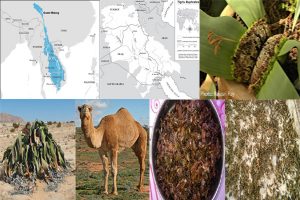 CEiBa team welcomes you all to our first issue of 2021. The year is action-packed with the repeated surge of virus attacks and our war footing response to restrict the growth of the virus empire. Vaccination drive is in full swing and the researchers are in an all-out race to find out how to tame the virus. Nevertheless, this pandemic is an eye-opener for many of us to be aware of the fact that uncontrolled alteration of natural dynamics eventually backfires the human race. The exposure to the yet-unknown pathogens will shoot up unless we put a check on our business as usual approach towards nature and natural resources. The practice of sustainability never felt so urgent for the survival of our race.
CEiBa team welcomes you all to our first issue of 2021. The year is action-packed with the repeated surge of virus attacks and our war footing response to restrict the growth of the virus empire. Vaccination drive is in full swing and the researchers are in an all-out race to find out how to tame the virus. Nevertheless, this pandemic is an eye-opener for many of us to be aware of the fact that uncontrolled alteration of natural dynamics eventually backfires the human race. The exposure to the yet-unknown pathogens will shoot up unless we put a check on our business as usual approach towards nature and natural resources. The practice of sustainability never felt so urgent for the survival of our race.
We’ll be confronted with the multiple aspects of sustainability as we forage through this issue. The first article talks about the importance of rural settlement for ecological integrity and sustainability. A part of the traditional landscape, a picturesque leisure adobe for many urban dwellers, an active social-political-economical unit for countless rural peasants, and at the heart of modern India, village or rural settlement offers many explanations to us. This article narrates how a typical village with its homestead, scattered vegetation, public places, daily lifestyle and, community practices support local ecological functions and biodiversity in the rural landscape. It also takes into account challenges like homogenization, environmental degradation, changing lifestyle practices, and possible measures to improve it.
The sustainability issue echoes at the core of the second article but in the context of economics. The author tears apart the intricate link between neoliberal economics and its active role in consumerism which ultimately settles into unsustainable, uncontrolled natural resource exploitation. Starting from the history of economics, the author narrates how industrial and technological advancement replaced the old limited growth-ethical distribution economic model with all encompassed unlimited growth model. And, in what form neo-liberal economics promotes inequality within the society and its toll on the environment.
Wild food section holds its permanent place with the new entrants, Portulaca, Pyrus, Rhus, and Rhyncotechum – they are well-known for medicinal value but less appreciated in culinary use. A curated body of texts on their role as food seems to revitalize our dietary diversity with pleasure. In the end, glimpses of nature present a mixed bag of incidents and practices like hydro-hegemony, a plant with two leaves, amphibian camels, and fermented food.
Wish you a happy reading.
RAJASRI RAY
ARTICLES
Rural settlement: The epicenter of sustainability in environmentally challenged India
A countryside…a village….a place of tranquility for many of the urban dwellers. Certainly, the greenery, cultivated field, openness, and mosaic of land parcels tend to mesmerize us. The scenery is even digitally eye-catching in Google earth if you zoom in on the human inhabited areas in India except for the big cities. The settlement studded traditional landscape in rural India often resembles “Starry Night” and is a real-life example of how entangled we are with…
Biodiversity conservation to sustainable consumption: Discerning the root causes of the environmental crisis
In the last few decades, environmental issues at different scales have become an integral part of our everyday lives. International relations and political discourses are increasingly shaped by various environmental challenges (Danish 2007; Stavins et al. 2016). It does not require any special mention that we are going to witness a multi-layered socio-environmental and humanitarian crisis in the form of climate change in the next few decades. The long-term impact will deeply affect the lives…
WILD UNCULTIVATED EDIBLE PLANTS OF INDIA
Wild uncultivated edible plants of India
Part 9 (……after part 8) Portulaca oleracea L. Family: Portulacaceae The plant, globally known as purslane, is an herb belonging to Portulacaceae. It is widely used across the world for its culinary and ornamental purposes. Locally known as kulfa or nunia or lunia, the herb…
GLIMPSES OF NATURE AND CULTURE
Glimpses Of Nature And Culture
Hydro-Hegemony: The weaponization of water Our introduction to water is as old as our existence. The human civilization started its journey in full swing once our ancestors settled along the riverside for the sake of agriculture. Since then, it was a long course of actions…




